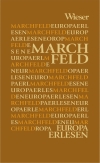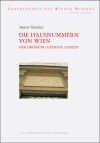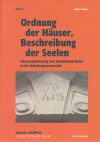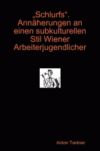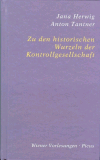Dissertation zur Entfestigung deutschsprachiger Städte
Mit der "Entfestigung" deutschsprachiger Städte, d.h. dem Abreißen der Stadtmauern beschäftigt sich Yair Mintzkers Dissertation, die online zur Verfügung steht:
Mintzker, Yair: The defortification of the German city, 1689-1866. Stanford University, 2009.
http://gradworks.umi.com/33/64/3364507.html
PDF: http://gradworks.umi.com/3364507.pdf
Abstract: "The Defortification of the German City" tells the story of the metamorphosis of German cities from walled to open places.
Down to the eighteenth century, all German cities were fortified places. Since the city was "a coherent [social] body in a protected place," as Johann Justi, a contemporary jurist, defined it, the urban environment had to be physically separated from the surrounding countryside. This separation was crucial to guaranteeing the city's commercial, political, and legal privileges. Fortifications were consequently the sine qua non for a settlement to be termed a town or a city. "Without them no place can be called a town," Justi wrote, "however large and handsomely built it might be."
From 1689 to 1866, most German city walls were demolished. By following the dramatic defortification stories of German cities, the dissertation demonstrates how most defortifications were not the result of urban expansion, as is so often argued, but of political disputes between princes, generals, bureaucrats, and burghers during Germany's transition to the modern era. The dissertation includes both quantitative and qualitative data integrated into a general narrative. Quantitatively, it maps out the process of the demolition of German city walls by analyzing information about the cases of close to a thousand German cities; qualitatively, it follows several case studies and uncovers a wealth of yet unexplored defortification documents from multiple archives, including state memoranda, city council protocols, diaries, novels, poems, plays, and even music.
The dissertation is divided into seven chapters. The first two, "The City and Its Walls" and "A Changing Habitat, 1689-1789," discuss the number, function, and meaning of city walls in eighteenth-century Germany and the first attempts to defortify them. City walls, these chapters argue, were much more than purely military defenses: they were a fundamental element in the definition of the city, an expression of the urban community's "honor" in the world of the Holy Roman Empire. To understand the first defortification waves in Germany, one therefore has to examine what happened to the Empire's political culture in the eighteenth century and how the Empire's decline affected its cities. Chapters Three, Four, and Five, "The Great Defortification Surge, 1789-1815: General Characteristics," "The Forces Without: Munich, Ehrenbreitstein, and Breslau," and "The Forces Within: Frankfurt am Main and Hamburg," discuss the main defortification wave in the German lands during the Revolutionary and Napoleonic Wars. They explore the general reasons for the defortification surge of 1789-1815 and discuss several case studies that demonstrate how the general political upheaval of the period contributed to the metamorphosis of over half of all German cities into open settlements. Finally, the sixth and seventh chapters of the dissertation, "Restoration's Boundaries, 1815-1848" and "A New City, 1849-1866" discuss the fifty years between the Congress of Vienna and the defeat of the Austrian Army at Königgrätz. These chapters demonstrate how the years immediately after 1815 witnessed an attempt to "turn back the clock" on the developments of the Napoleonic Wars and discuss why these attempts were discarded in the wake of the 1848 revolution.
What is at stake in the description of the defortification of German cities transcends the issue of the city walls themselves. "The Defortification of the German City" is first of all German history told from the bottom up: the stories of countless communities, their invasion by external forces, and their varied reactions to the dramatic events around them, from the rise of great territorial states in the eighteenth century, through the experience of French occupation, to the political culture of restoration and Biedermeier Germany. The dissertation also analyzes a new perception of urban and political "spaces" that emerged during the transition to the modern period in Germany, but which was representative of a much larger development. By closely looking at the German national context, the dissertation demonstrates how our modern conception of boundaries, places, and spaces is at once more uniform and more diverse than earlier ones. More uniform in the sense that older divisions, such as the clear physical division between city and countryside, have lost their salience; more diverse in the way other boundaries became more sharply drawn and new political, social, and cultural divisions became more clearly defined.
Mintzker, Yair: The defortification of the German city, 1689-1866. Stanford University, 2009.
http://gradworks.umi.com/33/64/3364507.html
PDF: http://gradworks.umi.com/3364507.pdf
Abstract: "The Defortification of the German City" tells the story of the metamorphosis of German cities from walled to open places.
Down to the eighteenth century, all German cities were fortified places. Since the city was "a coherent [social] body in a protected place," as Johann Justi, a contemporary jurist, defined it, the urban environment had to be physically separated from the surrounding countryside. This separation was crucial to guaranteeing the city's commercial, political, and legal privileges. Fortifications were consequently the sine qua non for a settlement to be termed a town or a city. "Without them no place can be called a town," Justi wrote, "however large and handsomely built it might be."
From 1689 to 1866, most German city walls were demolished. By following the dramatic defortification stories of German cities, the dissertation demonstrates how most defortifications were not the result of urban expansion, as is so often argued, but of political disputes between princes, generals, bureaucrats, and burghers during Germany's transition to the modern era. The dissertation includes both quantitative and qualitative data integrated into a general narrative. Quantitatively, it maps out the process of the demolition of German city walls by analyzing information about the cases of close to a thousand German cities; qualitatively, it follows several case studies and uncovers a wealth of yet unexplored defortification documents from multiple archives, including state memoranda, city council protocols, diaries, novels, poems, plays, and even music.
The dissertation is divided into seven chapters. The first two, "The City and Its Walls" and "A Changing Habitat, 1689-1789," discuss the number, function, and meaning of city walls in eighteenth-century Germany and the first attempts to defortify them. City walls, these chapters argue, were much more than purely military defenses: they were a fundamental element in the definition of the city, an expression of the urban community's "honor" in the world of the Holy Roman Empire. To understand the first defortification waves in Germany, one therefore has to examine what happened to the Empire's political culture in the eighteenth century and how the Empire's decline affected its cities. Chapters Three, Four, and Five, "The Great Defortification Surge, 1789-1815: General Characteristics," "The Forces Without: Munich, Ehrenbreitstein, and Breslau," and "The Forces Within: Frankfurt am Main and Hamburg," discuss the main defortification wave in the German lands during the Revolutionary and Napoleonic Wars. They explore the general reasons for the defortification surge of 1789-1815 and discuss several case studies that demonstrate how the general political upheaval of the period contributed to the metamorphosis of over half of all German cities into open settlements. Finally, the sixth and seventh chapters of the dissertation, "Restoration's Boundaries, 1815-1848" and "A New City, 1849-1866" discuss the fifty years between the Congress of Vienna and the defeat of the Austrian Army at Königgrätz. These chapters demonstrate how the years immediately after 1815 witnessed an attempt to "turn back the clock" on the developments of the Napoleonic Wars and discuss why these attempts were discarded in the wake of the 1848 revolution.
What is at stake in the description of the defortification of German cities transcends the issue of the city walls themselves. "The Defortification of the German City" is first of all German history told from the bottom up: the stories of countless communities, their invasion by external forces, and their varied reactions to the dramatic events around them, from the rise of great territorial states in the eighteenth century, through the experience of French occupation, to the political culture of restoration and Biedermeier Germany. The dissertation also analyzes a new perception of urban and political "spaces" that emerged during the transition to the modern period in Germany, but which was representative of a much larger development. By closely looking at the German national context, the dissertation demonstrates how our modern conception of boundaries, places, and spaces is at once more uniform and more diverse than earlier ones. More uniform in the sense that older divisions, such as the clear physical division between city and countryside, have lost their salience; more diverse in the way other boundaries became more sharply drawn and new political, social, and cultural divisions became more clearly defined.
adresscomptoir -
Wissenschaft - Mi, 17. Aug. 2011, 11:21
